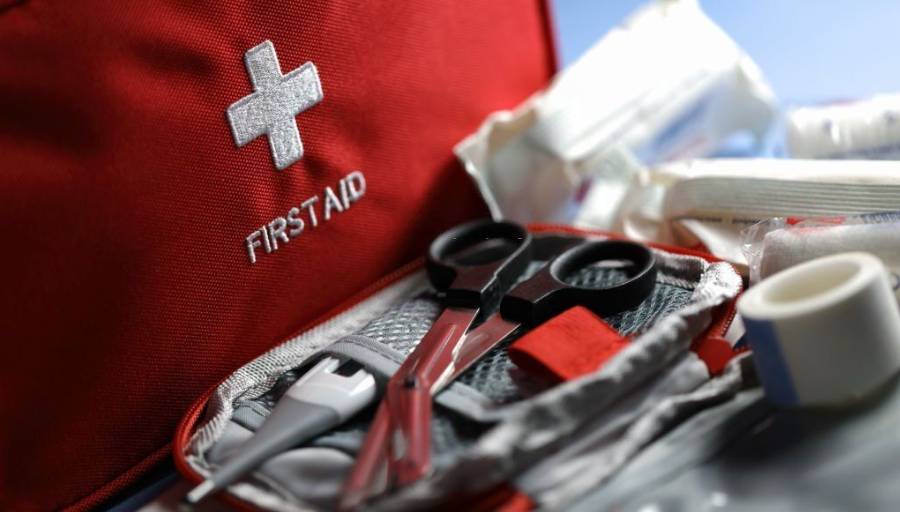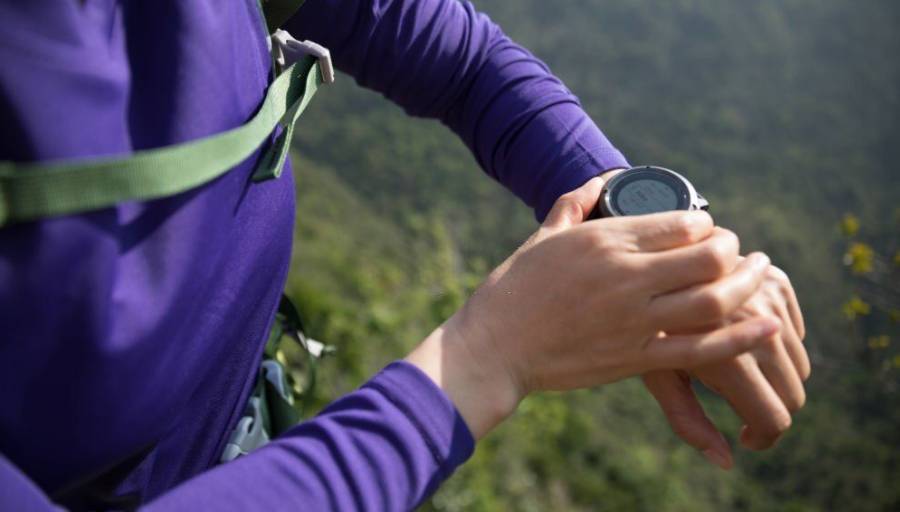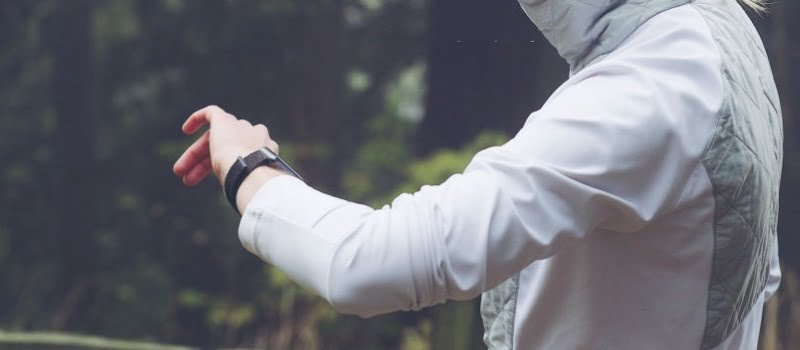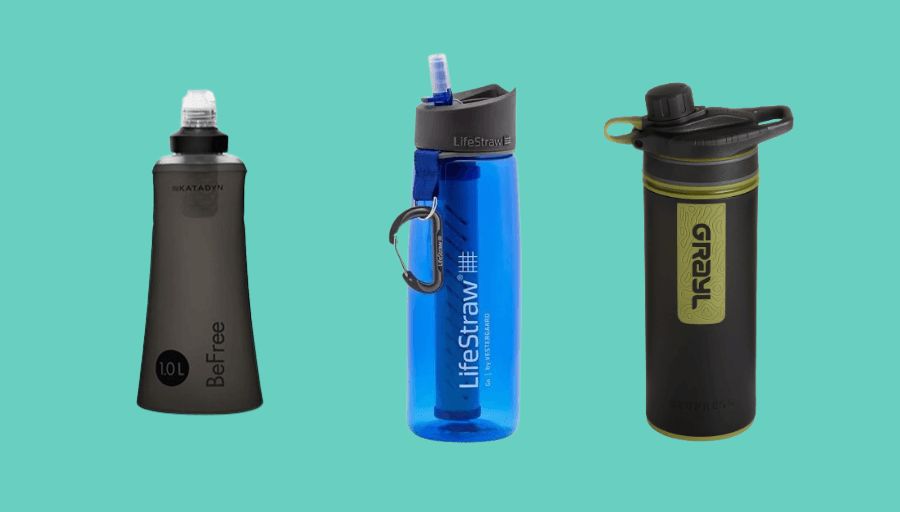Best First Aid Kits for Hiking of 2025

When you hike or practice an outdoor activity with an ultralight backpack, your primary goal is to reduce the weight of your load as much as possible, so that you can gain freedom and range of motion. However, it would be best to never reduce your equipment at the expense of your safety. Whether you are a new or experienced hiker, one of the essential items to keep in your bag is the first aid kits for hiking safety. The contents of this first aid kit can be organized to suit your specific activities. This can be supplemented with additional hiking or camping equipment.
However, the market offers an array of innovative and comprehensive first aid kits designed specifically for outdoor enthusiasts. We’re here with the 8 best first aid kits package for hiking, designed to adapt to a variety of emergency needs and scenarios.
Best First Aid Kits for Hiking
If you’re in a hurry, take a glance at our top picks below. For detailed reviews, keep scrolling.
| Image | Name | No. of Pieces | Rating | Price |
 | EVERLIT Survival Aid Kit | 250 | 5.0 | Check |
 | Surviveware Comprehensive | 100 | 5.0 | Check |
 | HART Outdoor | 100 | 4.5 | Check |
 | All Health | 100 | 4.5 | Check |
 | MICHELIN 009531 | 44 | 4.5 | Check |
 | Active Era Premium | 260 | 4.0 | Check |
 | Amazon Basic Care | 54 | 4.0 | Check |
 | LIFELINE-4180 AAA | 121 | 3.5 | Check |
1. EVERLIT Survival Emergency First Aid Kit
Specifications:
- Number of Pieces: 250
- Weight: 1.9 pounds
- Dimensions: 8 x 6.5 x 5 in.
This kit produced by EVERLIT is the complete first aid kit par excellence. You can use it to cover a fairly wide area, from home to survivalism through school, travel, camping, and of course, hiking. Besides the essential kit, the package includes 239 medical items and 11 survival supplies suitable for various emergency situations.
The military-grade bag is made from 1000D water-resistant nylon, which ensures exceptional durability. It features three spacious compartments and numerous straps to help you keep your supplies organized.
With 8 x 6.5 x 5 inches in dimensions, EVERLIT portable first aid bag is waterproof. It can find its place easily in your backpack. You can also attach it to your belt. It has several pockets, a connection loop, and nylon straps, which are a guarantee of its quality.
Pros
- Molle compatible
- Water-Resistant
- Durable and portable
- Large gauze pads
Cons
- Basic Stuff
- Small size
2. Surviveware Comprehensive Premium First Aid
Specifications:
- Number of Pieces: 100
- Weight: 1 pound
- Dimensions: 7.5 x 6 x 3.5 in.
This comprehensive emergency kit from Surviveware is water-resistant and rip-resistant. It is dedicated to outdoor care. With a total weight of 1 pound, this kit consists of 100 pieces to administer first aid.
The package includes a triangular bandage and another anti-adhesive, a blanket, a cooling sticker, antibiotics, a dressing pad, alcohol swabs, medical tape, a whistle, a band-aid, an elastic BPT bandage, scissors, a TPE tourniquet, a burn cream, a paperclip and cotton swab, a balm, a disposable mask, and more.
The organized inner compartments make it easy to find what you need in case of an emergency. All the items are neatly packed in a compact bag measuring 7.5 x 6 x 3.5 inches. The manufacturer also includes instructions to guide you on using the kit effectively.
Pros
- Portable and functional
- Water and rip resistant
- Designed by adventurers for adventurers
- Quality zippers and organized compartments
Cons
- No instructions on tourniquet
- Whistle and the pair of gloves are small
3. HART Outdoor First Aid Kit for Day Hike
Specifications:
- Number of Pieces: 100
- Weight: 4 oz
- Dimensions: 5.5 x 4.5 x 1 in.
With more than the emergency kits you need for a hike, this kit is a complete accessory. HART Outdoor first aid kit comes with Adhesive bandages including 2 butterfly closures, two 3 x 3/4 in. strips, two 3 x 1 in. strips, 2 fingertip bandages, 2 knuckle bandages, medical tape, safety pins, cotton swabs, tweezers and hemostats, alcohol swabs, povidone-iodine, cotton iodophor, non-woven positioning tape, and more.
With a compact and portable design, this first aid package measures only 5.5 x 4.5 x 1 in., and comes with instructions to allow everyone great ease of use. The bag is designed to resist dirt, sweat, and water, and provide a protective cushion for minor wounds.
Pros
- Quick Guide
- Easy to carry
- Roomy pockets with hook-and-loop closures
- Gauze products are thick and absorbent
Cons
- Few items
- Small
4. All Health First Aid Kit for All Purpose
Specifications:
- Number of Pieces: 100
- Weight: 0.53 pounds
- Dimensions: 9.7 x 7.5 x 3 in.
Designed by the All Health team, this brief first aid kit contains 100 items, including several survival tools for the pros. The case is made of durable but lightweight plastic, which expends its resistance to water and lifetime.
Besides this, this kit has more compartments to meet your specific requirements. Note that the All Health first aid kit is very popular for its lightness. It weighs only 0.53 pounds in total. This is why you can put it in your backpack or pocket without taking up too much space.
In terms of its items, this kit includes a wide range of equipment; you can use for small wounds and minimize the risks for large wounds. The package also includes hydrocortisone cream and triple antibiotic ointment to help you prevent infection and treat minor injuries.
Pros
- Ideal for all adventures
- Heavy-duty and compact case
- Includes hydrocortisone cream and triple antibiotic ointment
Cons
- Basic scratch patch kit
- Very slim assortment of gauze
5. MICHELIN 009531 Leisure FIRST Aid Kit
Specifications:
- Number of Pieces: 44
- Weight: 260 g
- Dimensions: 7.1 x 5.3 x 2.5 in.
Michelin provides an extensive range of products designed for hiking, including guides, maps, books, and practical accessories like this first aid kit. As a major player in the tourism industry, Michelin offers comprehensive emergency solutions for hiking enthusiasts.
The rectangular format of this first aid kit is specifically designed for convenient storage in a glove box or door compartment during hiking trips. However, its ample space makes it suitable for use in long vacations or hiking activities.
Indeed, its dimensions make it a rather bulky kit, but this aspect is counterbalanced by the presence of many elements, all well organized in dedicated compartments. With a total of 44 items, the Michelin first aid kit has all the essentials: bandages, dressings, gloves, disinfectant, safety pins, scissors, tick puller, survival blanket, etc.
Pros
- Good value
- Zipped shockproof pouch format
- Lightweight and easy to carry
- Well compartmentalized
Cons
- Quite bulky
- More suitable for motorists (format and content)
6. Active Era Portable First Aid Kit
Specifications:
- Number of Pieces: 260
- Weight: 2.4 pounds
- Dimensions: 9.5 x 7 x 3.5 in.
Active Era offers a first aid kit available in two formats. The smallest (presented here) is complete with no less than 260 items. In the bag, you will find dressings, sterile eye pads, adhesive plasters, bandages, scissors, tweezers, a survival blanket, etc. All these elements are easy to access, thanks to the many compartments that make up this robust and water-resistant care kit.
While its bulky size and weight may make it an excellent choice for vacations, hiking, camping, or keeping in an automobile, it might be too large if you’re aiming for a minimalist hiking experience. However, you can pare down the kit for shorter hiking trips.
Pros
- Very large number of elements
- Perfect for camping, hiking, home
- Available in two sizes
- Accessible
Cons
- Very bulky
- Probably too many elements for day hikes
7. Amazon Basic Care Ultralight First Aid Kit
Specifications:
- Number of Pieces: 54
- Weight: Not Specified
- Dimensions: 6.2 x 4.6 x 2.6 in.
Amazon markets its own first aid kit, which offers several advantages, starting with its compact size. Indeed, its dimensions make it a very easy first aid kit to take with you in all your activities, without putting a strain on the weight of your equipment or its storage.
Moreover, its dimensions do not mean that it will overlook the essential elements of a good first aid kit. Thus, you will find in this kit 30 plasters, 5 cotton strips, 6 swabs of sterile gauze, 1 bandage, 5 disinfectant wipes, 1 non-woven cloth roll, 1 metallic scissor, 1 metallic tweezer, 2 bandage clips, and more, etc.
Additionally, this Basics kit is readily accessible, making it essential for a wide range of users!
Pros
- Accessible kit
- Convenient compact size
- hiking friendly design
- Complete and lightweight
Cons
- More complete options exist (but are not always more useful)
8. Lifeline First Aid Emergency Kit
Specifications:
- Number of Pieces: 121
- Weight: 1.34 pounds
- Dimensions: 10 x 3 x 5.5 in.
Lifeline offers a compact and practical first aid kit, similar to the Amazon Basic Care kit, with reduced dimensions. However, it stands out by integrating solutions that facilitate its transport. Its small and compact design makes it easy to carry for hiking and other outdoor activities.
Indeed, it is equipped with carabiners and a high-quality main zipper. Also, its water-repellent coating will allow you to carry it outside the hiking bag using its carabiner.
The practical design of the kit doesn’t overshadow its contents. You will find dressings, sterile bandages, gloves, an emergency blanket, a pair of scissors, a manual explaining the actions to be taken in the event of an accident, etc. However, this is not a complete waterproof kit.
Pros
- Easy to carry: carabiners, clips, belt loops, etc.
- Hard shell foam carry case
- Easy to store and carry
- Cheap price is accessible to anyone
Cons
- The bandages are cheap
- Most gear comes in knock-off style
Personalizing Your Hiking First Aid Kit
Carrying a rigid and bulky first aid kit with you is certainly not the best way to prepare for accidents while hiking. On the contrary, acquiring experience, technical knowledge, and training in life-saving gestures will allow you to feel more at ease and you will gain reactivity in the event of a problem.
On a personal note, when I started the hike, I always carried a first aid kit in a large plastic box, which had a lot of items I didn’t need and made my load considerably heavier. Little by little, I became familiar with the good techniques to adopt in the event of an accident and I learned to put together my own care kit with elements that I am sure I can use and that will be useful to me in my outdoor practice.
First aid kits are practical for starting your own kit that you will lighten yourself later. Indeed, take care to adjust the content of your first aid kit according to your actual needs and your outdoor sports practice. Remove everything you won’t basically need, add your medications, and readjust the items of the kit to make it as ergonomic as possible.
It is also possible to start your own kit from elements already in your possession (bandages, care, ointments, etc.), but also with the help of small plastic containers that will help you compartmentalize your equipment. This solution will probably be less expensive in absolute terms (although first aid kits are on the whole very affordable), but you will probably lose ergonomics.

What Are the Essential Elements of a First Aid Kit for Hiking?
As we mentioned previously, an ideal first aid kit will depend on your habits, sports practice, ability, and ease of using first aid equipment. However, we can consider that certain elements remain essential to a really good first aid kit that can be classified into different categories as follows:
To Prevent Minor Risks and Inconveniences:
- A washing and disinfecting solution for the hands: Biodegradable soap or hydroalcoholic gel. To avoid any risk of infection or the spread of germs, it is recommended to wash your hands before meals, and of course after each toilet break. Biodegradable soap is highly recommended outdoors to avoid polluting waterways. The hydroalcoholic gel can be used without requiring a water source.
- Latex gloves: To avoid any risk of infection through contact with bodily fluids, a pair of latex gloves is recommended.
- Sun protection: Sunscreen and a lip balm, offering UV protection, will allow you to progress at your own pace without fear of sunburn. It may be optional depending on your hiking destination and the season in which you will practice your hike.
- Dressings, moleskin and protections to avoid blisters: So that you can avoid blisters and overheating of the feet as much as possible, which could affect your progress, it is recommended to take these elements with you in your first aid kit.
- A sports lotion or balm: An outdoor lotion can be useful to avoid overheating and chapping of the skin (it can also be optional depending on the intensity of your sports practice).
To Prevent Injuries and Illnesses:
Besides the basic items of a first aid kit, you can pack medications that will relieve more disabling discomforts or symptoms of physical injuries.
- Painkillers and Anti-inflammatories: These can help reduce pain from injuries or swelling. They can be useful for making your journey more comfortable. Remember to follow recommended dosages.
- Anti-diarrheals: These can help relieve stomach discomfort and prevent dehydration due to diarrhea. However, if symptoms persist, it’s important to consult a doctor as soon as possible.
- Antiallergics: If you have a history of allergies, it’s important to have an antiallergic on hand to manage severe allergic reactions.
- Prescribed Medications: If you have a specific condition or pathology and are prescribed medication by your doctor, make sure to take it with you on your hike. Consistency in medication is important for managing your health.
- Antibiotic Cream: This is useful for aiding the healing process of cuts and wounds. Apply the cream before bandaging the wound for better results.
Bandages to Heal Your Wounds
To bandage wounds or sprains and to stop small bleeding due to cuts or wounds, it is essential to have bandages and plasters at hand.
- Bandages of Different Sizes: Carry a variety of bandages to cater to different sizes of cuts. Opt for ones that are water and sweat resistant for durability and ensure that they stay in place during your activities.
- Butterfly Adhesive Strips: These are handy for closing deeper wounds. They provide additional support and help the wound edges stay together during the healing process.
- Sterile/Gauze Compresses: Essential for disinfecting larger wounds and stopping bleeding. These sterile compresses are crucial for wound care and should be included in your hiking first aid kit.
- Adhesive Bandages or Medical Tape: These are important for securing a bandage or dressing in place. They help keep the wound protected and prevent contamination.
- Strapping-type Bandage: In case of a sprain or joint injury, having a strapping-type bandage is essential. It provides support and stability to the affected joint and helps to prevent further injury.
Sometimes Very Useful Additional Material
To help you execute your gestures more quickly and more precisely, or simply to gain more thoroughness, you will need very practical tools:
- Tweezers: These are essential for removing splinters or any foreign body lodged in a wound. Make sure they are clean and have a pointed tip for precise extraction.
- Medical Scissors: Keep a pair of medical scissors in your kit for quick and efficient cutting of bandages. They come in handy when you need to change dressings or create custom-sized bandages.
- Safety Pin: A safety pin is a versatile tool that can be used to secure a bandage or help maintain a joint in a sling. It’s a small but useful addition to your first aid kit.
- Tick Tweezer: This specialized tweezer is designed for safely and completely removing ticks. It’s important to have one in your kit if you’ll be in areas where ticks are prevalent.
A Care Kit That Suits You
The above items will help you form the basis of a good first aid kit without overloading you with items that could weigh down your hiking gear. Obviously, depending on your real needs, your sports practice, and the latitudes in which you will evolve for your hike (season, weather, topology, the dangerousness of the fauna and flora, etc.), the contents of your kit may vary noticeably.
To ensure that it is always adapted to your course, we also advise you to recalibrate your kit between each use. Also, be sure to check the quantity and expiry date of your medicines and bandages. And if necessary, you should replace them.
Always keep in mind that your first aid kit is absolutely essential. Indeed, it happens that we are too far-sighted in terms of equipment by asking questions relating to the content of comfort (for example “What if I bring an extra raincoat? “), but there is no way to be negligent for your first aid kit. On the other hand, there is no need to burden yourself with unreasonable care equipment that will be not useful to you.
As you will have understood, putting together a first aid kit will be an obligatory and above all personal step: depending on your real needs and your sports practice, the item of your first aid kit will vary but will be based on the same fundamentals.
Rest assured, there is no bad choice possible, but only a few grams to shed. To do this, experienced hiker takes precedence: with each new hike, you will be able to accurately gauge your needs and you can take the bare essentials while leaving the superfluous at home!
These Guides Might Interest You...






